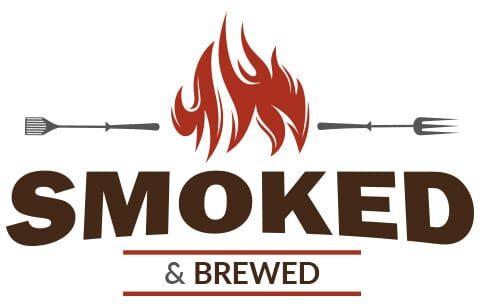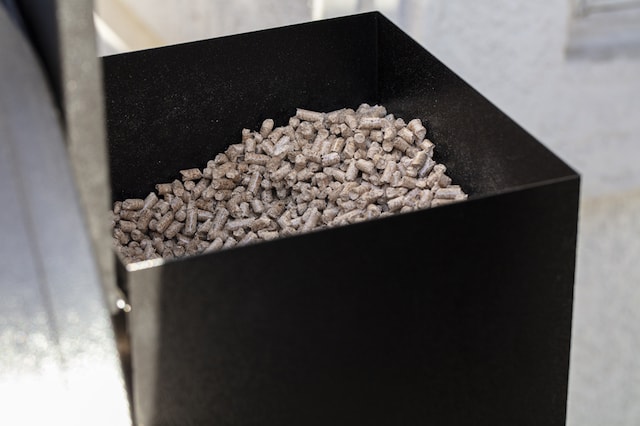Choosing the right kind of pellets for your smoker can be overwhelming. There are different grades of pellets, different wood types, different brands. The urge to simply purchase a bag of pellets at random is understandable. After all, at the end of the day, aren’t all smoker pellets pretty much the same?
As a whole, not all smoker pellets are created equal. The wood type, quality, and brand of the pellets you choose can affect many aspects of your smoking experience, including the flavor of your meat, the quality of your smoke, and the consistency and evenness of your heat.
So I would advise against just picking any old smoking pellets. But the question remains, how do you know which pellets are right for you? Keep reading if you want to find out!
What Makes a Smoker Pellet Good?
To understand what makes a high-quality pellet, we first need to understand what a pellet is. Smoker pellets are made from a compressed wood byproduct called “sawdust”. Pellets are packed with the same amount of sawdust, making each pellet equal in both size and weight. So what does this mean for your smoker?
Because smoker pellets are consistent in their size and weight, they ignite at the same temperature and burn for the same length of time, providing even and consistent heat throughout the smoke. This makes pellets ideal for pitmasters looking for a fuel that provides the flavor characteristics of wood with the predictability of charcoal.
Premium Pellets vs. Low-Grade Pellets
Premium-quality pellets are typically advertised as 100% natural wood. Because they contain only wood, these pellets provide the most consistent heat and burn for the longest time. 100% wood pellets also leave very little ash behind once they’ve finished burning.
Lower-quality pellets tend to contain unwanted materials called “filler”. Filler can be anything from tree bark to chemical adhesives some brands use to bind the sawdust. Besides imparting less-than-ideal flavors into your meat, these fillers will also cause cheap pellets to burn up faster than premium pellets. Filler will also cause the pellets to burn unevenly, making your smoking less predictable and easy to control.
On average, premium pellets are admittedly more expensive than their lower-grade counterparts. For this reason, you may be tempted to compromise the quality of your pellets to save a little money. Before you do, consider this: cheap pellets burn up quicker than premium pellets. So, if you go with cheap pellets, you’ll end up using more of them per smoke, meaning you’ll end up buying more in the long term. Whereas, with premium pellets, you’ll pay more upfront, but, because the pellets burn for longer, you’ll use less. In the end, it’s simply more cost-effective to go with premium pellets. Plus, you’ll get a better flavor and cooking experience. So don’t skimp!
What are the Types of Smoker Pellets?
There are as many types of smoker pellets as there are smoking woods. Each wood type not only burns differently but also provides a different flavor. For these reasons, it’s important to familiarize yourself with smoking woods before purchasing your pellets. The following is a list of common wood types used in smoking and what to expect from them.
- Oak: Oak is a great all-around smoking wood. It has a neutral flavor, not too strong, and not too mild. Due to its agreeable nature, oak pairs well with almost any protein. Because it’s a dense wood, it also burns for a long time, making it a great value. So, if you’re new to smoking or are unsure about which wood goes best with your protein, oak is always a safe bet.
- Pecan: Pecan is similar to oak in that it has a more mellow flavor, and burns for a long time. But, unlike oak, you can expect nutty notes in pecan’s flavor profile. This nuttiness pairs well with any protein that benefits from the addition of nuts. So, lamb, beef, and poultry are all great options.
- Hickory: One of the more well-known smoking woods, hickory is perfect if you’re looking to impart a bold, sweet and smoky flavor to your meat. Because pellet smoke tends to be on the milder side, hickory is a particularly good choice for smoking pellets. Because of its intense flavor, it’s also a great wood for both long and short smokes; plus, it pairs well with pretty much any protein!
- Mesquite: Mesquite is possibly the most famous smoking wood. A long-time favorite for Texas-based pitmasters, mesquite is well-known for its pronounced depth and sweetness. Its flavor is stronger than hickory and pairs well with pork and beef (especially brisket). But be warned– while mesquite is delicious when used in moderation, the flavor can quickly overpower a protein if left on the smoker for too long. For lighter meats, like chicken and fish, you’ll need to monitor your smoker a little closer.
- Apple: Lighter than oak, with a mild, sweet, and fruity flavor, apple is a long-standing choice for ham and bacon. But, because of its subtle flavor profile, apple is a good choice for more delicate meats like chicken and fish (like salmon) as well.
- Cherry: Like with all fruit woods, you can expect a mild, sweet flavor from cherry. But what sets cherry smoke apart is its surprisingly tart notes. Because of its subtle and unique flavor, cherry will lend complexity to poultry and pork, but it also pairs perfectly with gamier meats, like duck and venison.
Pellet Blends
While you can certainly smoke meat with one type of wood to great effect, smoking with wood blends is a great way to get surprising and complex flavor combinations out of your barbecue.
As I mentioned above, bold-flavored woods like mesquite and hickory can sometimes overpower the flavor of your meat. Blending these strong woods with lighter woods like oak or apple ensures that you can smoke your meat longer and impart some of those bold flavors without going overboard.
For greater complexity of flavor, some smokers blend different fruitwoods. Apple and cherry, peach, and plum– blends allow you to get creative with flavor combinations. If you aren’t too sure about making your pellet blends, you can buy pre-blended pellets from the trusted brand of your choice.
Scot has loved smoking food in his free time for the last few years. Each major holiday or off-weekend, Scot spends days testing and prepping new recipes for perfection.

